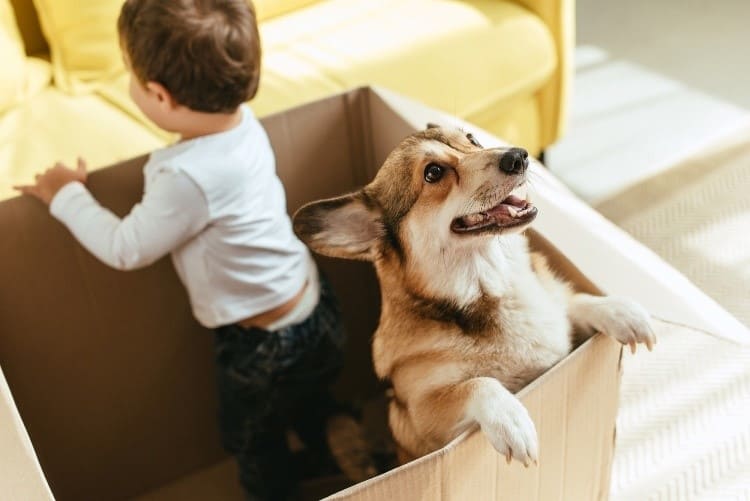Whether by choice or for a career, moving abroad is a significant decision that demands careful consideration and preparation. This is particularly true if you’re moving with your pets. Relocating pets overseas isn’t nearly as simple as moving them locally, and it isn’t without hardship for both humans and animals. However, you should be able to make it a little easier on both of you if you do your research and plan your relocation with your pet’s best needs in mind.
Keep in mind that moving internationally with pets cannot be done at the last moment. These problems do not have a one-size-fits-all answer, but here are some suggestions to make the experience less stressful for your beloved companion (s).
Examine the laws and regulations.
Pet ownership guidelines and requirements could be in your new state, city, homeowner’s association, or apartment complex. Some criteria may impact the details or timing of your move, so double-check the policies ahead of time. Additional regulations, quarantine periods, or paperwork may apply to some animals, such as reptiles, exotic animals, or domesticated livestock. In rare situations, breed limitations may apply, preventing you from bringing your pet with you.
To check state laws, go to the state’s Department of Agriculture website (access all state resources here), and to check municipal regulations, go to city hall. Finally, don’t forget to inquire with your landlord or realtor about any rules/requirements particular to your new house (or any residences you’re considering).
Consult your veterinarian.
If you’re moving overseas with pets, your veterinarian will be one of your most valuable contacts. They’ll be able to express any worries they have about your pet making the long flight (young, senior, anxious, or sick animals should not fly in cargo) and assist you in getting your pet ready for travel. This could involve giving them anti-anxiety medicine or ensuring they’re up to date on all of their vaccines. They’ll also be able to help you in fulfilling any health requirements imposed by the country to which you’re relocating.
Organize all of your documents.
Make sure you have all of the documentation you’ll need. This could include proof of your pet’s rabies vaccination or other immunizations, a note from your veterinarian approving them for travel, or other papers required by your airline and the country you’re traveling to. Have additional copies on hand, and double-check that everything is signed correctly. Paperwork that is missing or incomplete might cause costly delays. Worse, it’s likely that your pet will be turned away before the flight or when you reach the customs office at your new home.
Make plans that are pet-friendly.
Sometimes you need to pull over and take a break. Hotels have begun to treat birds, cats, dogs, and even gerbils like royalty now that they accompany their owners almost everywhere. Petswelcome.com and BringFido.com list hotels that accept multiple pets, including exotic animals. Create a list of places to stop along your route in case you need to.
When you reach your destination, tour local veterinary facilities to find the right fit. It’s also beneficial to ask for recommendations.
Pack a separate emergency moving bag for your pet.
Have all of your pet’s basics packed and ready to go to reduce the stress of moving for both you and your pet. An excellent place to start is with water bowls, a blanket, favorite toys, food, treats, kitty litter, etc.
To help with unforeseen clean-ups, bring a roll of paper towels and disposable plastic bags.
Taking Care of Your Pet’s Stress
Your attitude toward relocation might have a significant impact on your pet. Maintain as much peace and positivity as possible, and ask your family or housemates to do the same. A move that occurs due to a difficult life change, such as a split or divorce, may lead your pet to become more stressed. Changes in houses or family structures can be difficult for pets. Even if the environment and people change, strive to maintain your pet’s mealtime, walk, playing, and sleeping routines consistent.
You can also help your pet cope with the transition by retaining their familiar bedding, bowls, and toys for the new location and avoiding the need to acquire new items. In addition, avoid isolating your dog in a strange room all day or allowing your cat to wander freely while movers or relatives come and go.
Prepare your new home for your pet’s arrival by pet-proofing it.
A new environment can present your pet with unanticipated dangers. To ensure your pet’s safety in their new home, follow these pet-proofing guidelines:
- All screens, windows, gates, and doors should be secured.
- If you have a balcony, be sure your pet can’t fit through the opening or jump over the railing.
- Examine any external fences for possible escape routes.
- Finally, ensure that all vents are covered.
- Close toilet lids to prevent small pets from falling in and canines from drinking potentially toxic water.
- Look for any pest control traps or poison that may have been abandoned.
- Plants can be hazardous, so look around your yard and remove or isolate any plants that could harm your pet.
- Don’t limit yourself to the obvious! Mothballs, firestarter sticks, and electrical cords are just a few examples of things that can be harmful to your pet.
Keep in mind that dogs are more likely to chew when stressed. Therefore, please provide them with various chew toys so they are not tempted to chew on less attractive items (your shoes or an electrical cord, for example).
To limit the risks of your pet getting into something that could injure them, try to keep your room clean and clutter-free.
Maintain a similar routine.
Because most animals thrive on consistency, sticking to the same pattern throughout the relocation can help them feel more at ease sooner. However, it may be challenging to maintain the same routine as before; keeping their exercise and feeding times consistent is a simple act that will benefit your pet immensely in the long run.
Examine the surrounding area.
If you’re moving with your dog, chances are you’ll be taking walks around the neighborhood regularly. As a result, it’s good to check around the entire area you’re contemplating to ensure it’s a suitable fit.
Here are some questions to think about:
- Is there a chance your dog will be bothered by stray dogs or other animals?
- Is it busy or unsafe on the adjacent roads?
- Are there any nearby walking parks or areas where you can take your dog for a run?
When moving with pets, considering the safety of your new neighborhood will help provide a happy home for your animals while also giving you peace of mind.









